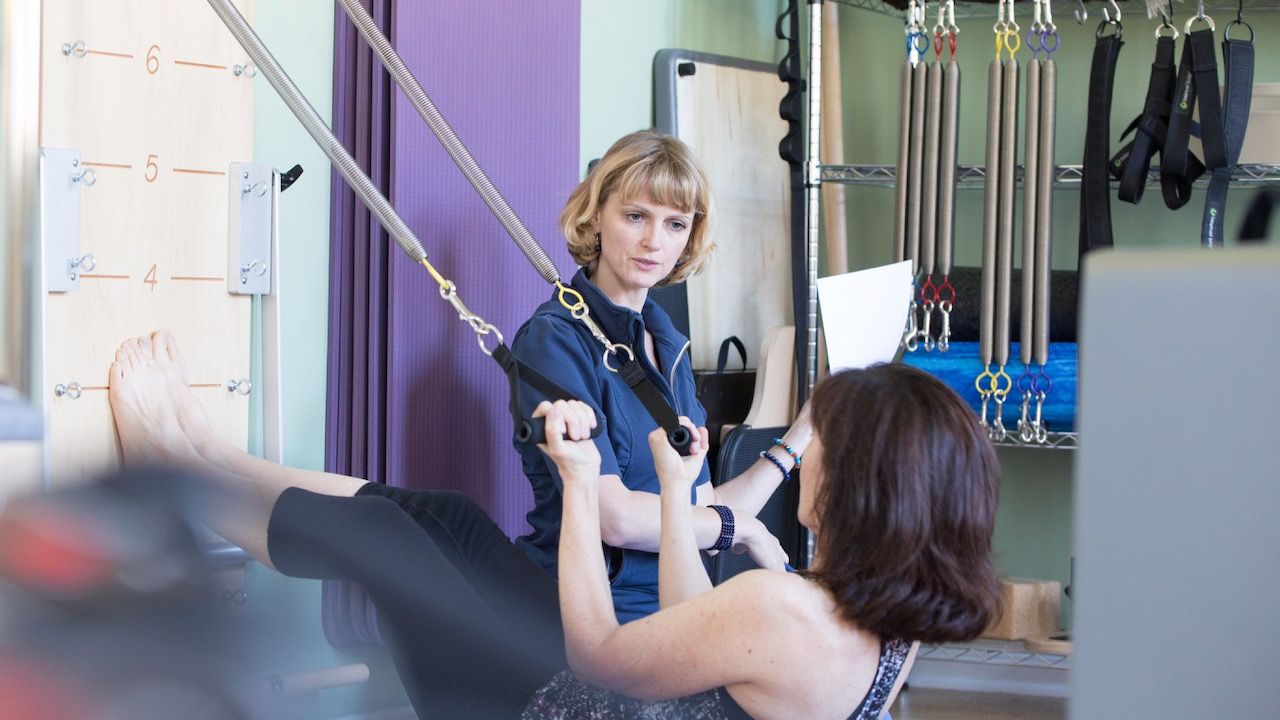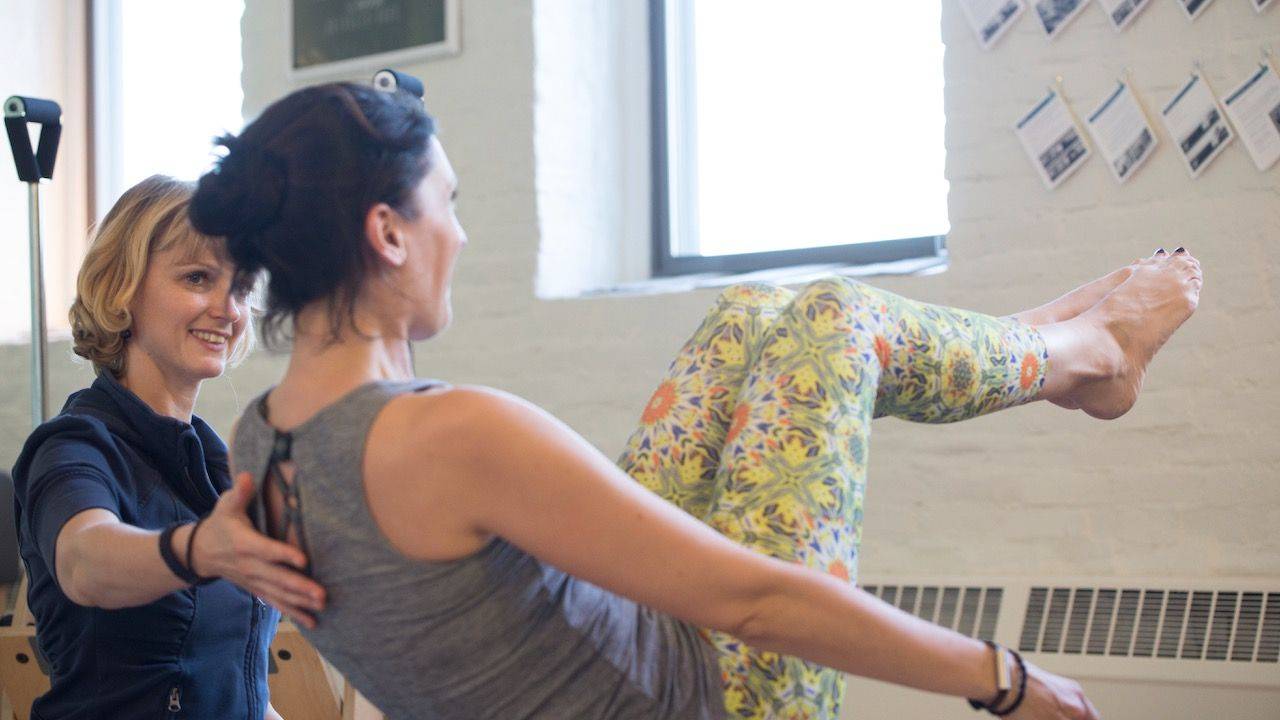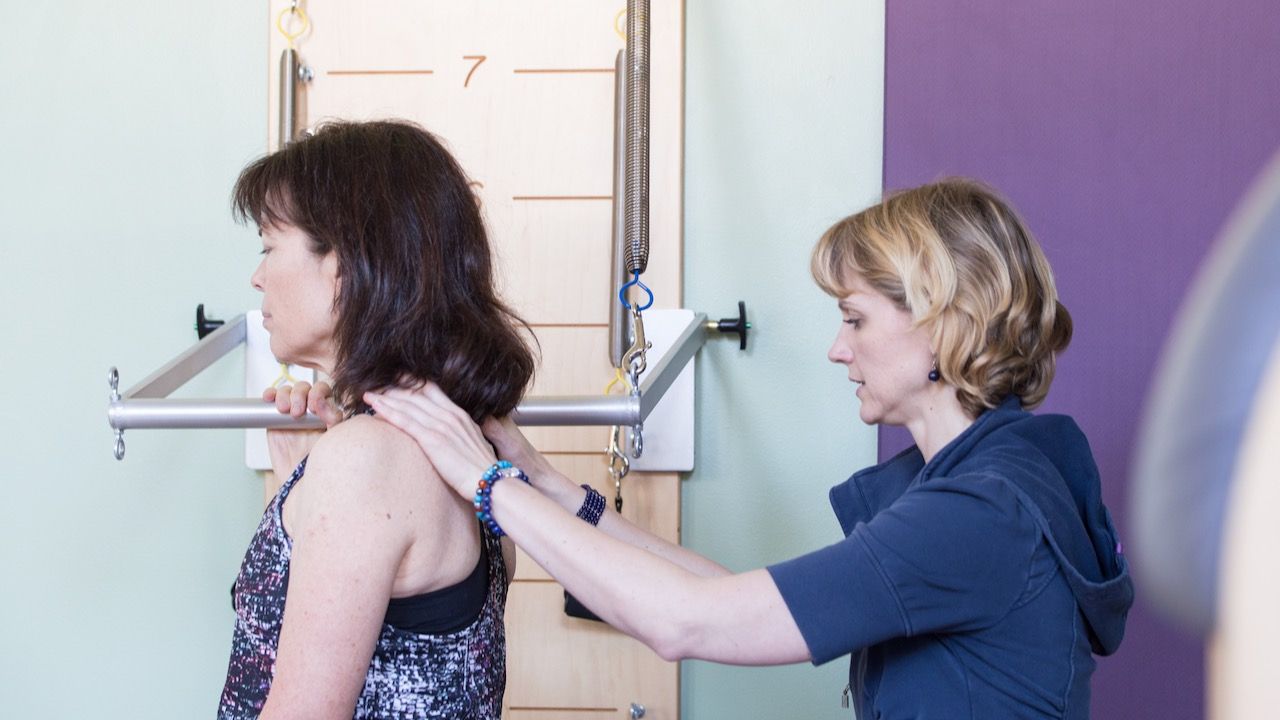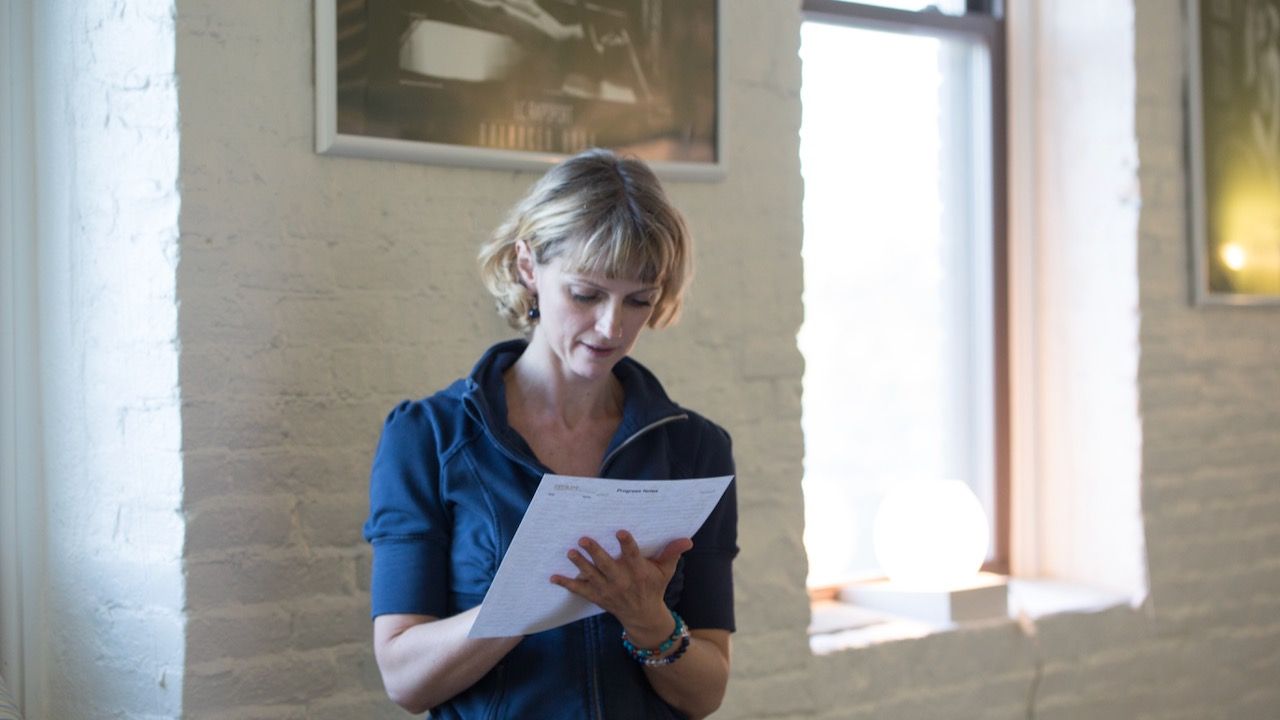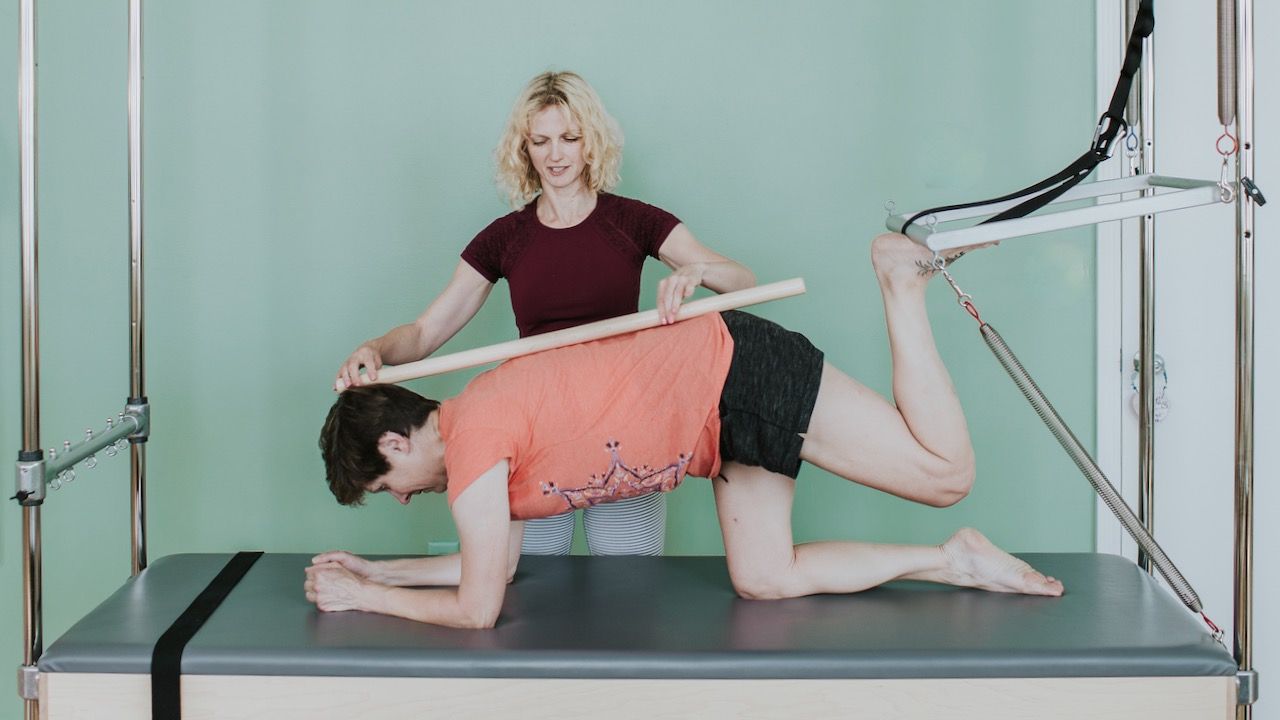
Pilates With a Disc Herniation
Feb 17, 2021An important part of recovery from a herniated disc is exercise. But which specific exercises can help a person ensure the long-term health of their spine?
One of my members asked:
Where do I start with someone who has a disc herniation? My student has seen a surgeon who said that, because there is no longer any pain (only a numb foot), he should strengthen his core. He had not exercised prior to the disc herniation, is middle-aged, overweight, and in a physical job where the injury occurred. He is currently wearing a brace. While I realize extension exercises initially help, when does a Pilates instructor introduce gentle flexion and rotation?
You mentioned that your client is no longer in pain, but is still experiencing numbness. Unfortunately, numbness can take quite a while to undo itself. It takes time for the nerves to grow back. Nerves send signals to the muscle to get it to fire. If the nerve doesn't send that signal, then the muscle is not getting the message to work. It's a little bit frustrating and sometimes hard to strengthen that area.
Stabilize the Injured Spinal Segment
First of all, it's important to know which segment of the spine is herniated and focus on stabilizing that. Start with neutral spine exercises and strengthen the muscles that stabilize the area. The most common herniations are in the lumbar spine, so any flat back/neutral spine core strength exercises should work great.
A strong core keeps the injured spine segment stable while you can work on mobilizing all the areas around it. This is important to maintain mobility for daily living and not end up limiting your range of motion. Motion is lotion, right?
Elongate The Spine
I recommend that you incorporate gentle traction exercises to increase the space between the discs. This will help free up the area and allow it to move a little better. A great traction exercise is to hold on to the top bars of the Cadillac, let the lower body get really heavy, and bend your knees to unweight your legs until the lower body is almost dangling. (Do as much as tolerated). At home, your student could use a Pull-Up bar.
If the student tolerates it, gentle spine extension exercises may be appropriate, too.
Progress To Gentle Flexion Exercises
A great way to introduce gentle flexion or check for tolerance is Segmental Bridging. Watch what happens through each segment of the spine. Does one area move excessively? Does another not move enough? Is there discomfort in a specific section? You can always choose a flat back bridge which will strengthen his hip extensors and transition to more articulation when he's ready.
Once your student can tolerate the gentle flexion, such as the posterior pelvic tilt of the imprinted position, teach them core strength mat exercises to do at home. Emphasize the importance of daily home exercise. Doing a full apparatus session at the studio once per week is going to be less effective than a daily 20-minute home routine.
Explain that if he'll do his exercises in the morning, he'll prepare his body for the day. His back and core muscles will be better able to support his spine during the day. It will set the tone for the whole day. If he can only fit in his exercises in the evening, then that's okay too, although the benefit will be slightly reduced. The home program doesn't have to be long. As always, quality over quantity. 15-minutes of great core exercises can be highly beneficial. Try
- Marching
- Table Top
- Dead Bugs
- Single Leg Stretch
- Double Leg Stretch (small range of motion, maybe legs only)
- Front Control
- Back Control
- Quadruped Knee Hover
Try one or two frontal plane core stability exercises, either
On apparatus, try
- Flat Back Hinge on the Trapeze Table/Tower,
- Short Box Flat Back
- isometric Side Sit Up on the Reformer or Ladder Barrel
- Side Balance on the Chair
Improving Hip Dissociation Helps With Lumbo-Pelvic Stability
Include hip dissociation exercises to help teach him to move from the hip instead of the spine. Examples are
- Hamstring I on the Chair with a flat back
- Squats to get the hip crease movement going
- Footwork and
- Feet in Straps on the Reformer are also great exercises because you can maintain a neutral spine throughout them.
Practice Movement Efficiency of Activities of Daily Living
Think about how to help prepare your client for his physical job. I would ask him what types of movements he does on a daily basis and work on improving those. If there's a lot of lifting and bending over, definitely teach him how to hinge from his hips and use his legs to lift (basically a squat) which requires leg strength.
Since one leg is weakened from the nerve pain, work on recreating symmetrical leg strength by training the weak side until fatigue but not the strong side in Single Leg Footwork on the Reformer. BTW - I wouldn't choose the Cadillac/Tower for this because the lumbar spine gets pushed into the mat quite a bit there (flexion).
Improve Mobility of the Thoracic Spine
Lateral flexion and gentle rotation of the thoracic spine are okay with a lumbar disc herniation. Be sure the movement is coming from the thoracic spine and keep the lumbar spine stable.
By increasing mobility in the thoracic spine, the necessary movement in the lumbar spine can be minimized. Less mobility, more stability. Short Box Side Bend and Twist on the Reformer or Ladder Barrel is a great way to practice that. Even sitting in a chair (for his homework) will do.
Only Practice Exercises That Can Be Done Without
A reminder about pain: The latest findings in pain research tell us that pain is not the result of a structural issue. Pain is a signal of the brain and nervous system indicating a problem.
That's why a positive movement experience during your student's Pilates practice is the single most important factor to make him feel better. (Thank you, Brent Anderson of Polestar Pilates, for lodging this message in my mind forever.)
This means, your student needs to perceive the exercise as doable, safe, and non-threatening. It should not be too challenging. The feeling that he can successfully do the exercise will help reduce his pain and bring back a full range of pain-free movement.
Inside the Pilates Encyclopedia member library, you'll find a whole "Special Populations" category in which we list appropriate exercises for the most common injuries and pathologies. Learn more...
I'd love to hear from you. Have you had experience with a herniated disc? What helped you or your student? Shoot me an email.
Get support with your day-to-day teaching challenges
Ready to Teach Pilates with Clarity and Confidence?
Sign up to receive my weekly email newsletter. It's jam-packed with Pilates articles, videos, exercise tutorials and teaching tips.
Only super valuable stuff here. No spam ever. Unsubscribe any time.








